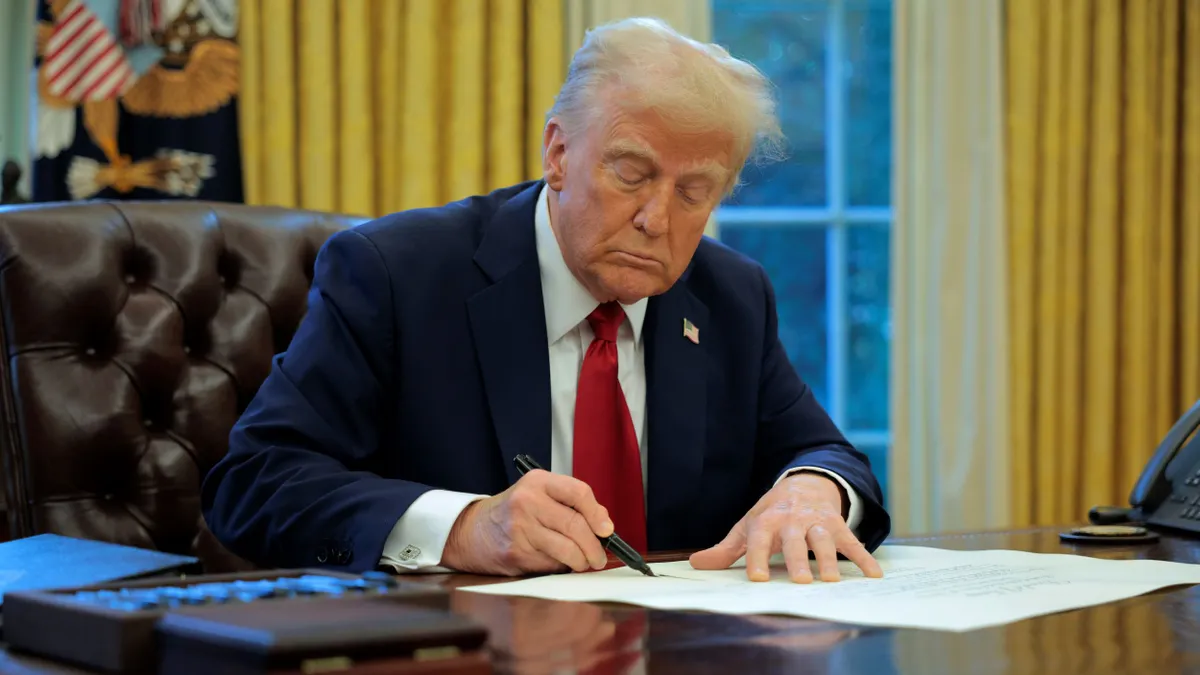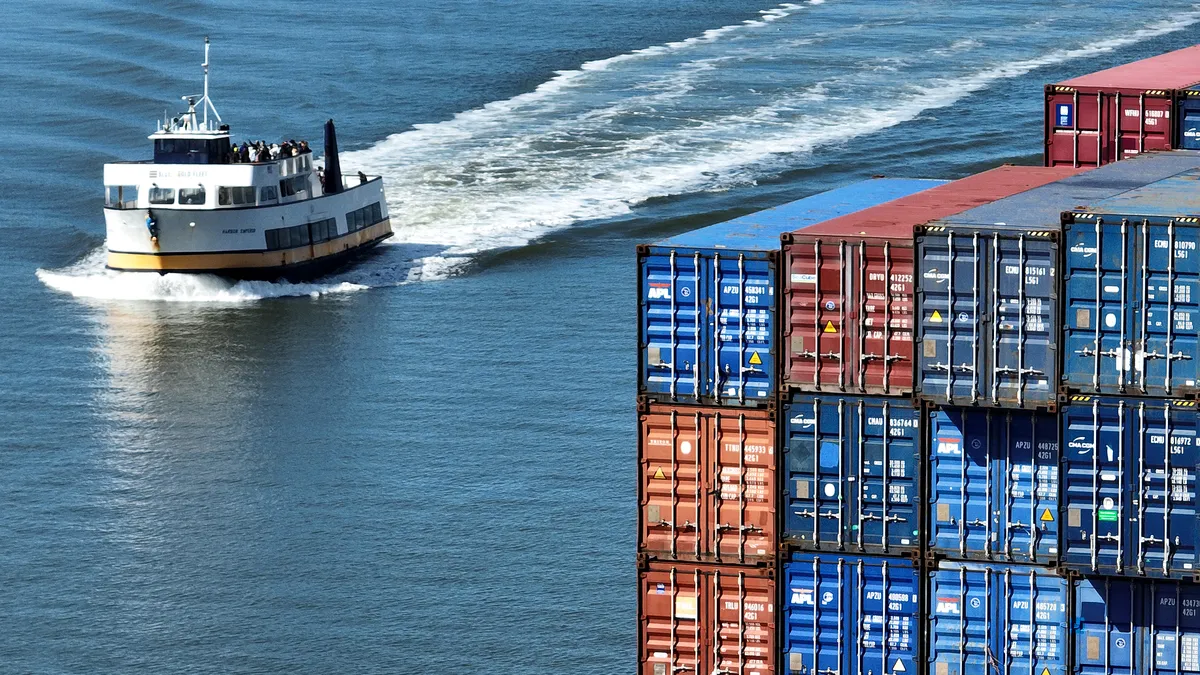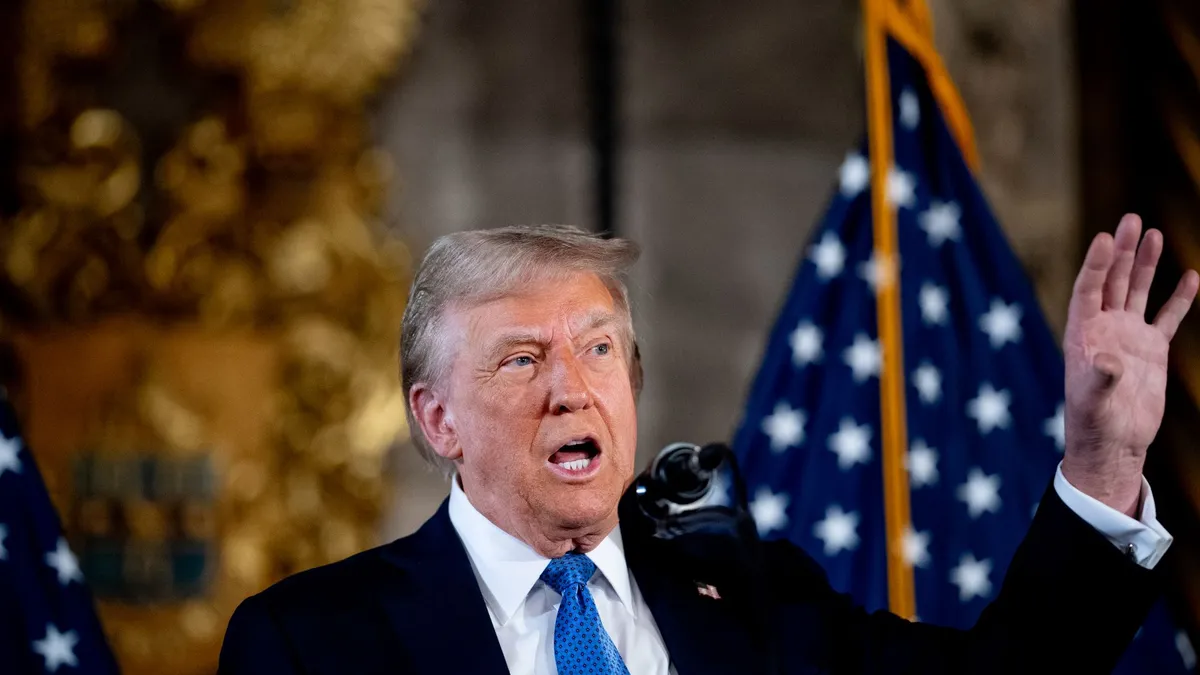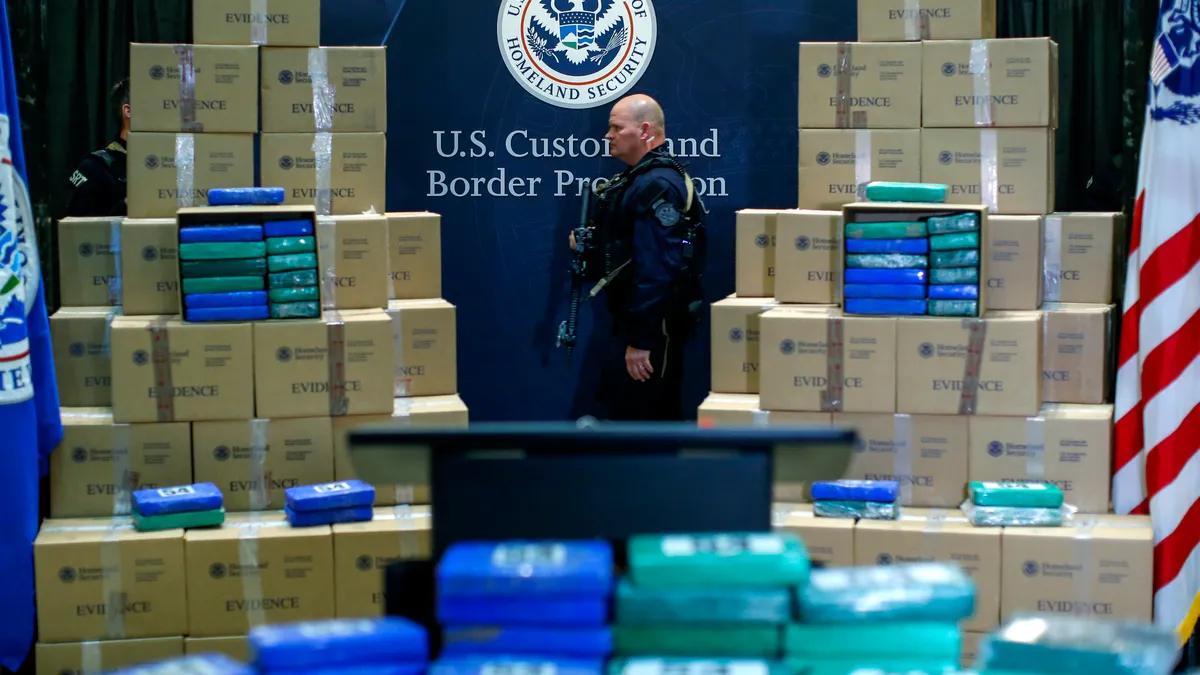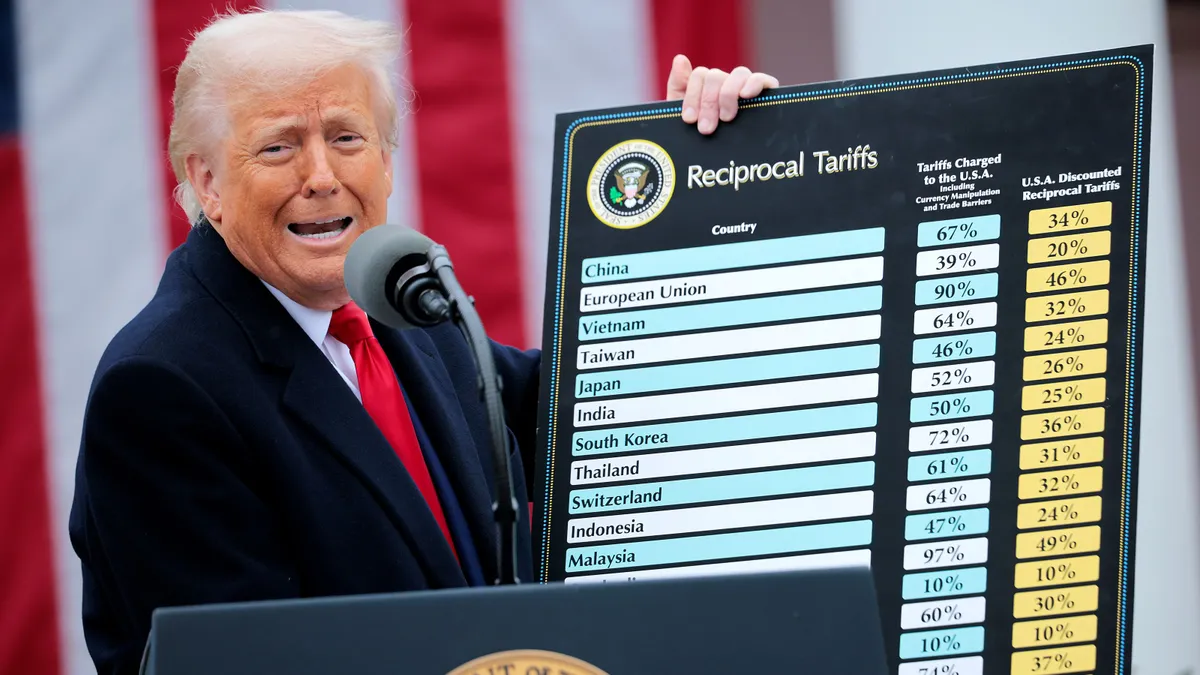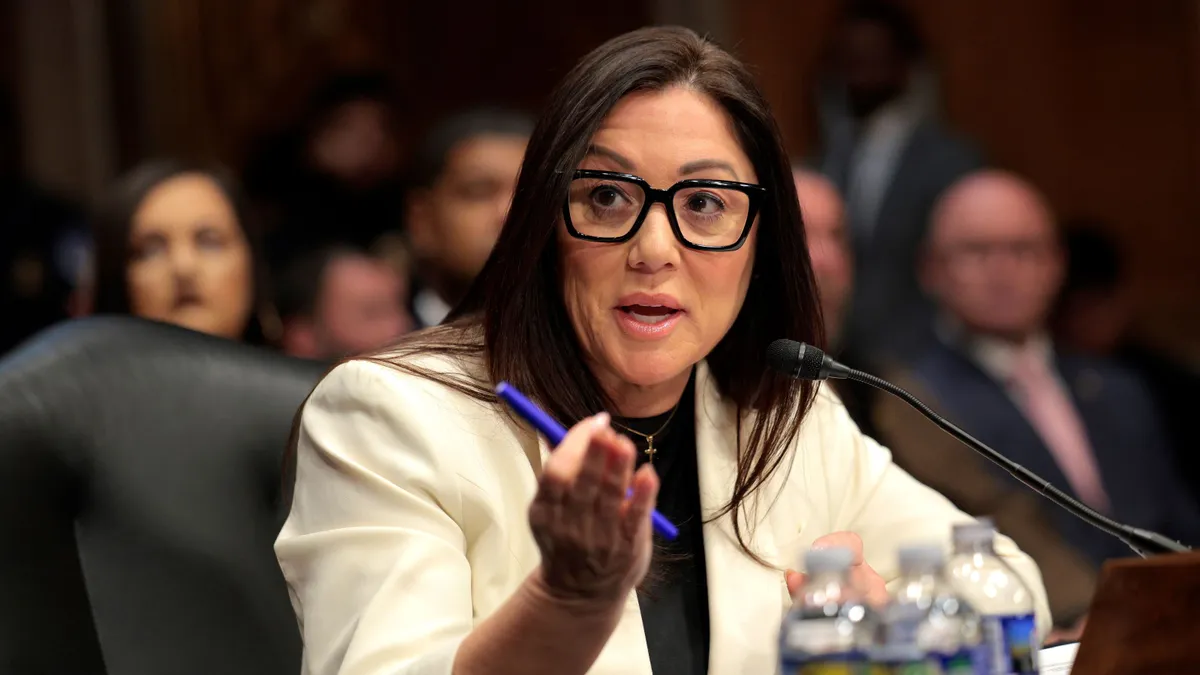President Donald Trump announced tariffs on China, Mexico and Canada over the weekend, leaving the fashion industry calling for deeper collaboration in trade and raising the alarm for the economy during a time of already-high inflation levels.
After the announcement, Canada responded by instituting a 25% tax on $155 billion worth of U.S. imports. On Monday, the U.S. delayed the tariffs it issued on Mexico by one month, and later the same day, both Canada and the U.S. agreed to a 30-day pause on the tariffs they set for each other.
Then on Tuesday, China responded to the U.S. tariffs with a 15% duty on coal and liquefied natural gas and a 10% on agricultural machinery, large displacement cars and pickup trucks.
The American Apparel and Footwear Association, a trade group whose membership includes more than 1,000 fashion industry stakeholders, said in a statement Saturday that imposing tariffs on these major manufacturing hubs calls into question the foundation of trade partnerships.
“Widespread tariff actions on Mexico, Canada, and China announced this evening will inject massive costs into our inflation-weary economy while exposing us to a damaging tit-for-tat tariff war that will harm key export markets that U.S. farmers and manufacturers need,” Steve Lamar, AAFA president and CEO, said in a statement.
Nate Herman, the organization’s senior vice president of policy, added that the industry needs tariff relief and smarter trade policy as the U.S. faces inflation.
“We need to renew expiring and expired trade preference programs with our allies and strengthen the competitiveness of our free trade agreement with Central America to stem the tide of migration,” Herman said.
Fashion is one of the most heavily tariffed industries in the U.S. and accounts for 5% of all U.S. imports by value, according to AAFA. In addition, nearly 98% of apparel consumed in the U.S. is imported, per the U.S. Fashion Industry Association.
While increased tariffs on some of these regions aren’t new to fashion companies — many have already implemented strategies on how to address them — industry observers said tariffs in Trump’s second term would be a point of focus in 2025.
Trade disputes and rising wages in China have led most apparel companies away from directly importing goods to the U.S. from China. However, it remains a major fashion producer and any changes will impact the industry, said David Swartz, senior equity analyst for Morningstar Research Services.
Companies including Nike, Adidas, Tapestry, Capri, VF and Ralph Lauren don’t produce merchandise in the U.S., and many of their products are made and sold in China, per Swartz. Companies with increased supply chain flexibility may be able to avoid direct tariffs and also might have negotiating power with their suppliers, which could help force those suppliers to absorb some tariff expenses, he said.
“However, there could be bigger problems — the Chinese government could hit American companies with restrictions or there could be a backlash against [American companies] by Chinese or Canadian consumers,” Swartz said in an email to Fashion Dive. “Moreover, if a trade war causes inflation/recession in China, Canada, U.S., etc., then their sales would be negatively affected.”
Some fashion companies will fare better than others under a potential new tariff structure, according to Tom Nikic of Needham & Company.
Athleticwear brands On and Lululemon are well insulated from risks due to these tariffs, Nikic said. In particular, On doesn’t source any of its footwear from China, although about 7% of its apparel is sourced from China, he said.
However, footwear brand Steve Madden is at particular risk.
“Unfortunately for [Steve Madden], they fall on the least-favorable ends of the spectrum on two of those metrics: they generate over 80% of sales domestically and source almost 80% of their goods in China,” Nikic said in a client note.
Following Trump’s reelection in November 2024, Steve Madden said it intended to reduce its reliance on China and planned to cut its imports from the country by 40% to 45% within the next year.
Despite this, Steve Madden would still have about 30% to 35% of its goods made in China after mitigation, according to Nikic. He added that Steve Madden also has meaningful exposure to sourcing in Mexico, with about a single-digit percent of goods, potentially making matters worse, he said.
The unpredictability of tariffs will make it difficult for fashion and apparel companies to plan, Swartz said.
“As we’ve seen with the tariffs on imports from Mexico being delayed, policies can seemingly change at any time for no reason,” Swartz said. “Since Trump seems to think that he can coerce any country into doing something by threatening tariffs, there is risk that imports from anywhere could suddenly be hit with big tariffs with no warning. A company like Nike would have a big problem if imports from Vietnam were hit with tariffs, for example. Companies like Gildan and Hanesbrands would be at risk if tariffs are expanded to Central America.”
He added that a potential trade war would have a large, indirect impact on the whole apparel and footwear industry. Practically every company would be adversely impacted if tariffs caused inflation that reduced consumer spending.



